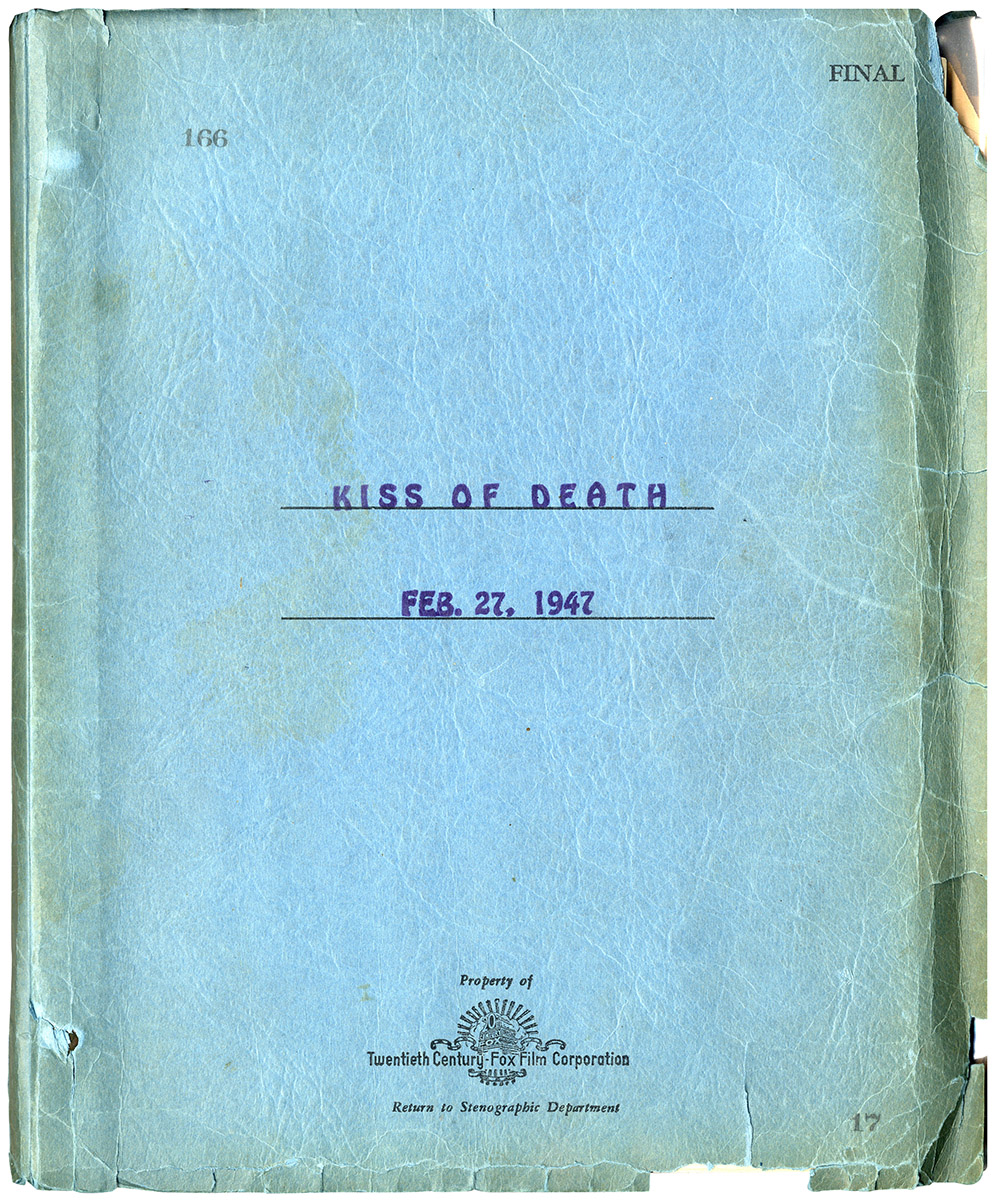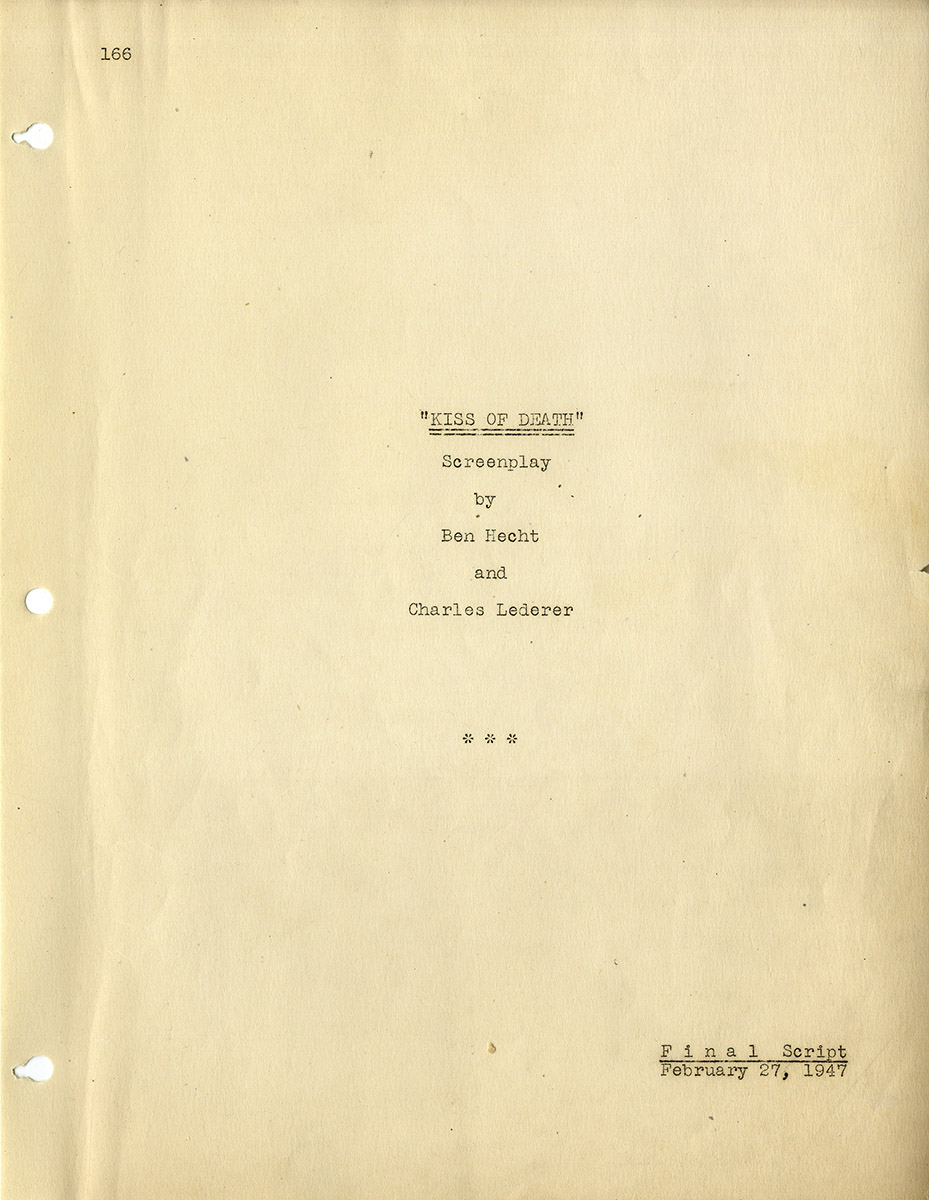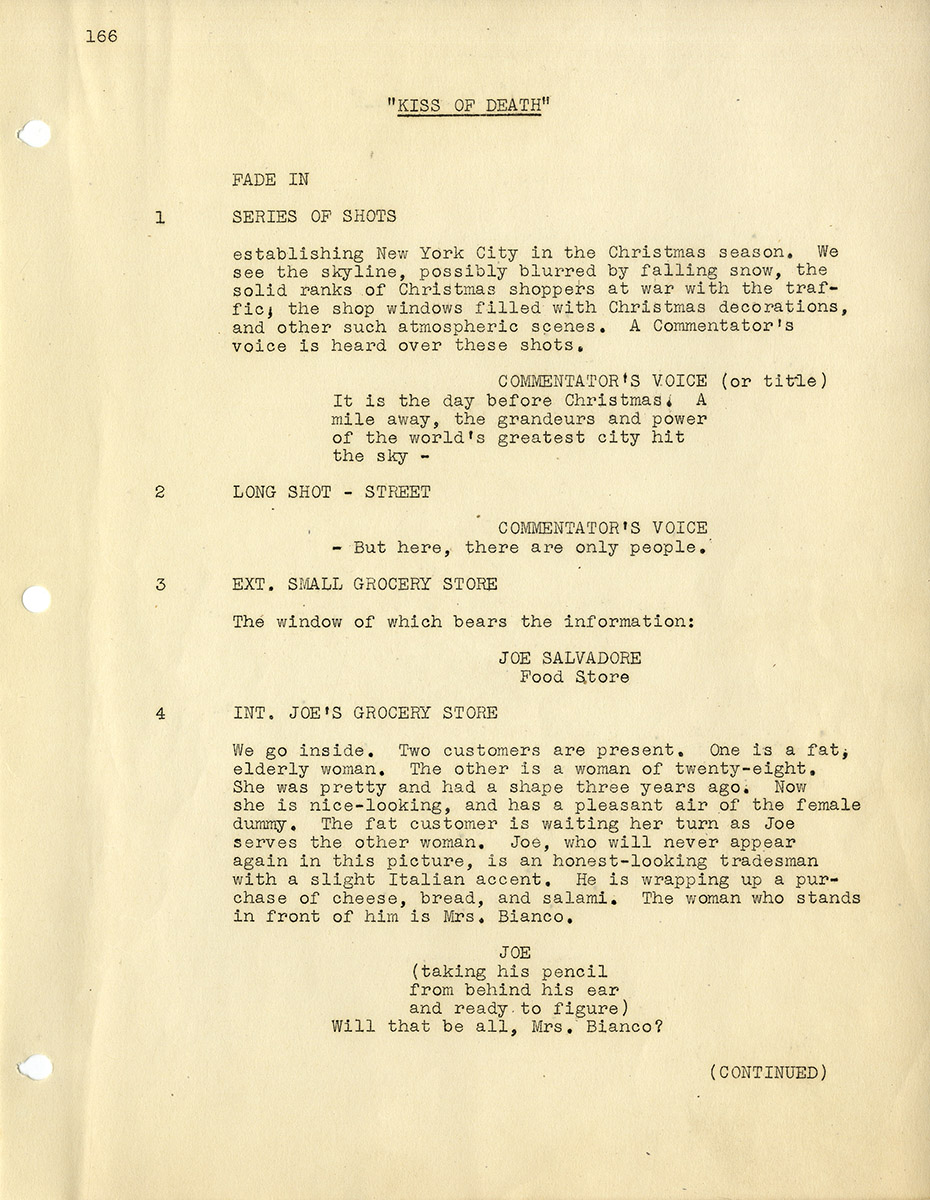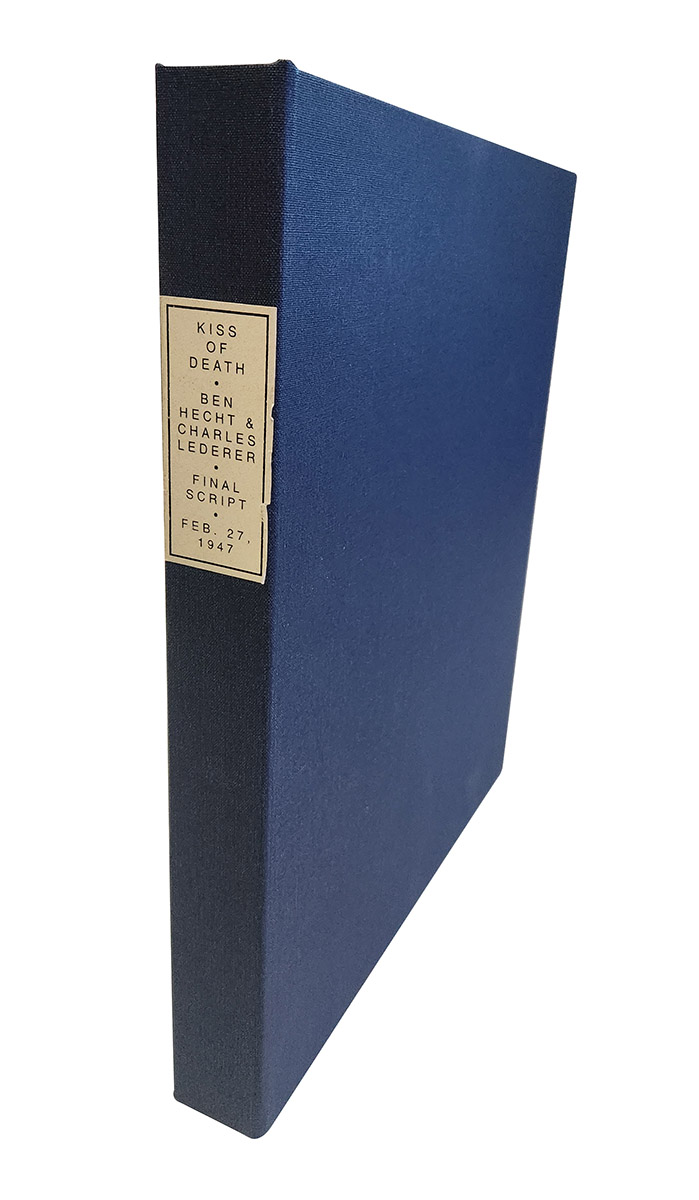Ben Hecht, Charles Lederer (screenwriters) KISS OF DEATH (Feb 27, 1947) Final film script
[Los Angeles]: Twentieth Century Fox, 1947. Vintage original film script, 11 x 8 1/2″ (28 x 22 cm.), 145 pp. Wear to edges of yapped printed wrappers. Perforated lower section of distribution page torn off (as usual), mimeograph, brad bound. Some pages, mostly toward the end, show signs of fragility, and a few of them have been encapsulated to protect and keep them legible. In a custom-built cloth box.
Director Henry Hathaway’s Kiss of Death (1947) is remembered for being among the most serious and naturalistic of Hathaway’s late-40s “documentary noirs” and, even more so, for Richard Widmark’s breakout debut performance as the giggling psychotic Tommy Udo.
This “Final Script” of Kiss of Death was written by one of the most respected screenwriting teams of classic era Hollywood: Ben Hecht and Charles Lederer. Their jointly-written screenplays included Howard Hawks’ His Girl Friday, The Thing from Another World and Monkey Business, and the Robert Montgomery-directed noir Ride the Pink Horse. Individually, Hecht was responsible for writing or co-writing Josef von Sternberg’s Underworld, Hawks’ Scarface, William A. Wellman’s Nothing Sacred and Alfred Hitchcock’s Spellbound and Notorious, among many other movies; while Lederer separately wrote or co-wrote the screenplays for Gentlemen Prefer Blondes, Billy Wilder’s Spirit of St. Louis, the original Ocean’s 11 and the 1962 Mutiny on the Bounty, among numerous others.
Kiss of Death was the second of Hathaway’s neo-realistic crime noirs made for Twentieth Century Fox, coming after 1945’s The House on 92nd Street followed by 1948’s Call Northside 777. As an opening title card informs us, “All scenes in this motion picture, both exterior and interior, were photographed in the state of New York on the actual locale associated with the story.” The movie’s use of real-life locations was matched by the naturalistic performances of its principal actors: Victor Mature as Nick Bianco, a thug from the streets who becomes a police informant, Brian Donlevy as an assistant district attorney, and Coleen Gray (best known for her role in Nightmare Alley) as Nettie, the ingénue who becomes Mature’s wife.
Sharply contrasting with the naturalism of the movie as a whole is Richard Widmark’s wildly expressionistic performance as the manic Tommy Udo, and the film itself turns darker and more expressionistic whenever Widmark appears on screen. The scene in which Widmark’s character pushes an elderly wheelchair-bound woman down a flight of stairs to her death made an indelible impression on 1940s audiences, and it made Widmark an instant star.
There are, in fact, substantial differences between this “Final” screenplay and the completed film. For one thing, the film adds a voiceover narration by Coleen Gray’s Nettie, who loves Victor Mature’s character and sees the good in him, a narration one suspects was added at the insistence of studio head Daryl F. Zanuck to underscore the movie’s theme of redemption. If Kiss of Death is about anything, it’s about the difference between one kind of criminal, Mature’s Nick Bianco, who is driven to crime because of circumstances (redeemable), and another, Widmark’s Tommy Udo, whose criminality arises from an innate maliciousness (not redeemable).
Unlike the movie, the screenplay begins with a scene of the first Mrs. Bianco — a character we never see in the film — shopping for groceries on Christmas Eve. The next screenplay scene — also not in the film — shows Nick and three of his associates in Nick’s apartment planning a jewelry heist. The movie, on the other hand, begins directly with the jewelry heist. This is a 145-page script, and a lot had to be cut in the process of making a 99-minute film.
The biggest change between the screenplay and finished film is the complete elimination of the first Mrs. Bianco as an on-screen character. Her affair with another hood and subsequent suicide while Nick is in prison for the heist are what eventually motivate Nick to become a D. A. informant. The Mrs. Bianco scenes were, in fact, shot but cut due to the censors’ prohibitions against the depiction of suicide.
The screenplay and film are also significantly different in their final acts, though both build to the same conclusion: a shootout between Tommy and Nick. In the screenplay that shootout occurs on a bus about to depart for Canada; in the movie it occurs in a more archetypally noir location: a city street. It looks as though Nick’s gunshot wounds are fatal, but Nettie’s voiceover narration assures us he survived, “[District Attorney] D’Angelo got what he wanted. Nick got what he wanted. And I got all I ever wanted. I got Nick.”
Collation:
- White pages (1/27/47): Distribution page, title page, pp. 1-29, 31-32, 34-60, 62-82, 85-91, 94-106, 108-118, 120-140, 142-145 Blue pages (3/14/47): 30, 33, 61, 107, 141
- Tan pages (3/31.47, with a notation A-516): 83-84, 92-93, 119 (Note: the tan pages were printed on a particularly fragile paper, and they do exhibit tears and chipping, none of which affect the actual text).
Out of stock
Related products
-
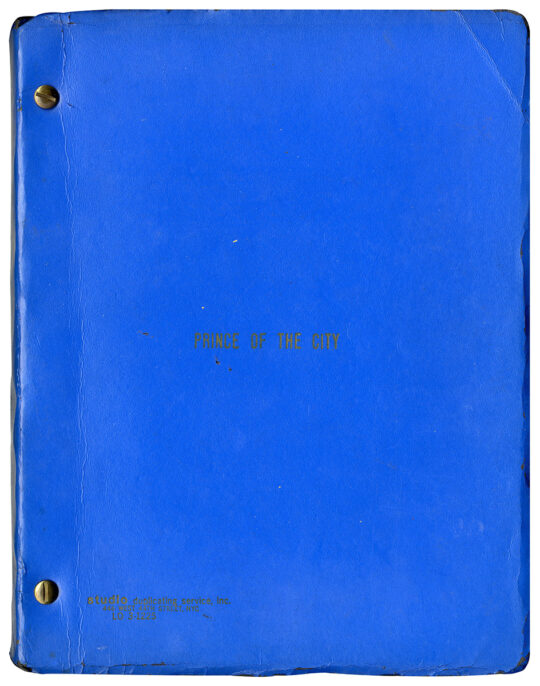
Sidney Lumet (director) PRINCE OF THE CITY (Jan 1980) Final Draft film script
$950.00 Add to cart -
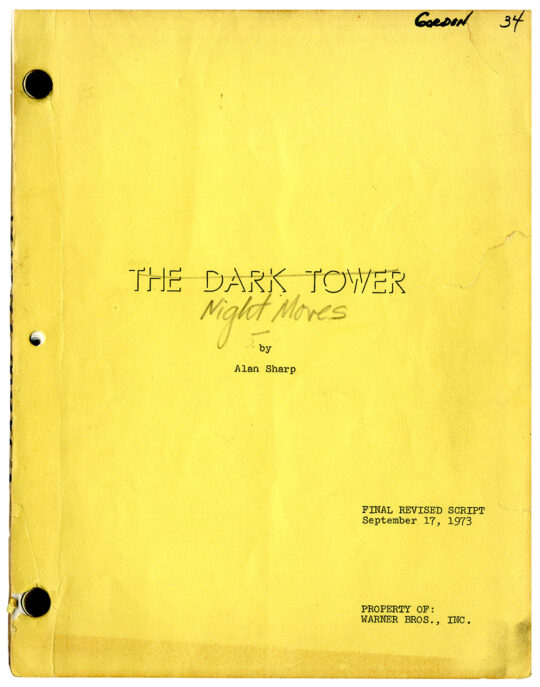
Arthur Penn (director) NIGHT MOVES [working title: THE DARK TOWER] (Sep 17, 1973) Final revised film script
$2,000.00 Add to cart -
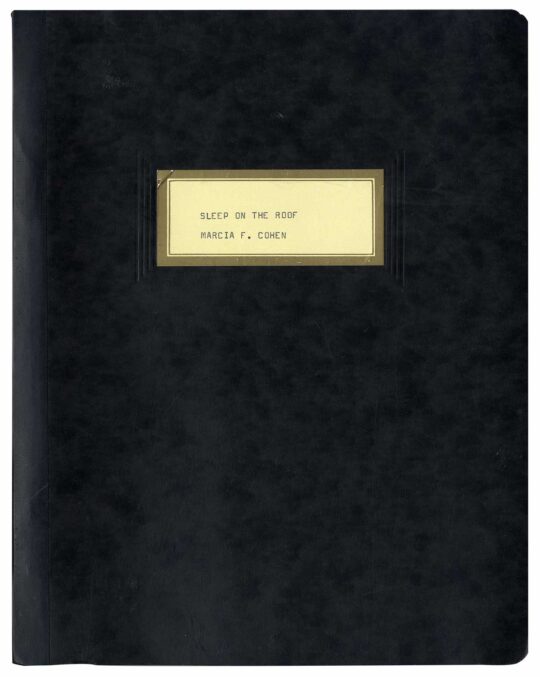
SLEEP ON THE ROOF (1967) Unproduced script based on the life of Margaret Sanger
$500.00 Add to cart -
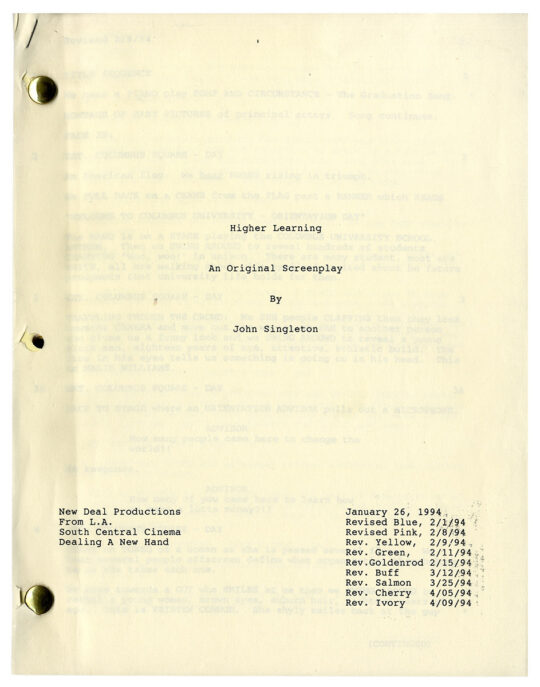
John Singleton (writer, director) HIGHER LEARNING (Jan 26, 1994) Rainbow film script
$500.00 Add to cart

